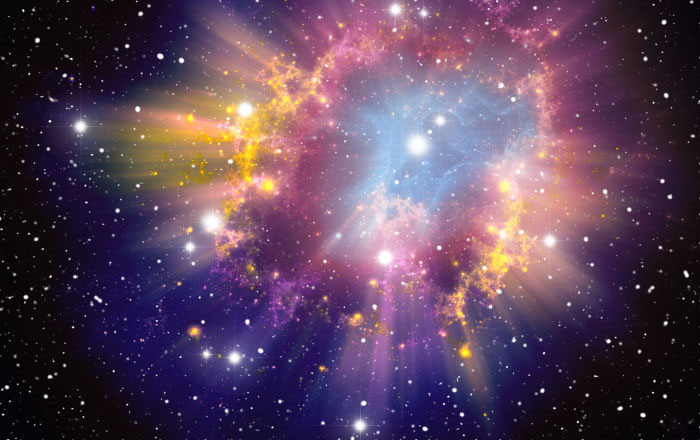Detect high energy signals coming from outside the Earth
The international group of astrophysicists with the participation of the Russian National Nuclear Research University MEPhI has detected a signal of high-energy galaxies in the Fermi Laboratory data.
This finding may shed light on the origins of the high-energy neutrinos previously recorded at the IceCube Neutrino Grain Observatory on Amundsen-Scott Station in Antarctica. Information about this discovery is published in the journal "Physical Review-D".
Neutrinos go through places where other particles "get stuck" . For example, low-energy neutrinos produced from the Sun fly through the Earth and provide information about fusion reactions in the solar core. High energy neutrinos come to us from extraterrestrial objects that we do not know yet and provide information that we cannot get by other observational methods.

At energies above 300 GeV, signals from sources outside our galaxy are strongly suppressed.
When studying the data of the high-power Fermi telescope (over 300 GeV), researchers from the Russian National Nuclear Research University MEPhI and colleagues from the University of Paris-Diderot (France), Dai Norwegian Science and Technology (Norway), Geneva University (Switzerland) has discovered a new component in the gamma flow.
"At energies above 300 GeV, signals from our external sources of galaxies are strongly suppressed by absorption of gamma radiation in intergalactic space . Meanwhile, inside our galaxy "Gamma radiation is practically not absorbed. Therefore, the component must have its source in our galaxy , " said Professor MEPhI Dmitry Semikoz, one of the authors of the study.
According to the scientist, the spectrum of the new component in accordance with the high-energy irregular neutrino line was recently discovered in the IceCube experiment. Because neutrinos are always "created" with gamma rays with a similar spectrum, scientists predict that both spectra are of common origin.
"In this paper, we propose two models that explain these data. According to the best model, radiation of neutrinos and gamma is created in a region of galaxies close to us due to interactions between Cosmic rays: According to the second model, neutrino and gamma radiation are the result of decay of dark matter in our galaxy , " said Professor Semikoz.
To determine which model is right, scientists should pay attention to the uniformity of the signals in subsequent studies. If the source of the signal is dark matter decay, the importance of this study is very high. But, even if the signal comes from a close source of astrophysics, we have for the first time had the opportunity to elucidate the origin of the ray that produces neutrino and gamma radiation that we observe.
Russia is building the "Gigaton Water Detector" Baikal Neutrino Telescope, which measures up to 1 km in size. As planned, by 2020, the Baikal telescope's sensitivity will be equivalent to the IceCube experiment. To observe the central part of our galaxy, the Baikal telescope is even better than IceCube, because it is located in the Northern Hemisphere (researchers in Antarctica often observe neutrinos "penetrate the Earth". literally).
- Gamma rays carry super energy coming from the other side of the universe
- Scientists reveal secrets about mysterious signals from the galaxy
- The mysterious, inexplicable signals from space
- The earth is getting strange signals from bubble objects
- The system converts shortwaves such as Wi-Fi signals, satellites into electricity
- Mysterious radio signals from the universe
- Earth's neutrino particle was first observed
- The Philae robot sends signals from comets to Earth
- Strange signals from the star are 11 light years from Earth
- Earth absorbs 'ghost particles' that carry high energy
- The alien signal constantly bounces off the Earth every second
- Detect suspicious signals of aliens from more than 230 stars
 Van Allen's belt and evidence that the Apollo 11 mission to the Moon was myth
Van Allen's belt and evidence that the Apollo 11 mission to the Moon was myth The levels of civilization in the universe (Kardashev scale)
The levels of civilization in the universe (Kardashev scale) Today Mars, the sun and the Earth are aligned
Today Mars, the sun and the Earth are aligned The Amazon owner announced a secret plan to build a space base for thousands of people
The Amazon owner announced a secret plan to build a space base for thousands of people